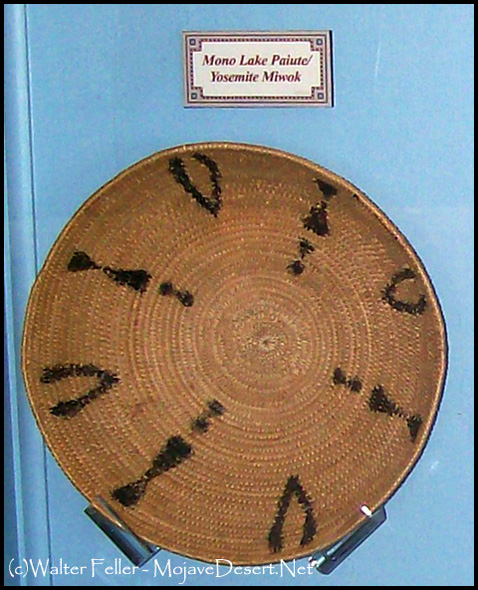The Basket Maker
There used to be in the Little Antelope a she dog, stray or outcast, that had a litter in some forsaken lair, and ranged and foraged for them, slinking savage and afraid, remembering and mistrusting humankind, wistful, lean, and sufficient for her young. I have thought Seyavi might have had days like that, and have had perfect leave to think, since she will not talk of it. Paiutes have the art of reducing life to its lowest ebb and yet saving it alive on grasshoppers, lizards, and strange herbs; and that time must have left no shift untried. It lasted long enough for Seyavi to have evolved the philosophy of life which I have set down at the beginning. She had gone beyond learning to do for her son, and learned to believe it worth while.In our kind of society, when a woman ceases to alter the fashion of her hair, you guess that she has passed the crisis of her experience. If she goes on crimping and uncrimping with the changing mode, it is safe to suppose she has never come up against anything too big for her. The Indian woman gets nearly the same personal note in the pattern of her baskets. Not that she does not make all kinds, carriers, water-bottles, and cradles, — these are kitchen ware, — but her works of art are all of the same piece. Seyavi made flaring, flat-bottomed bowls, cooking pots really, when cooking was done by dropping hot stones into water-tight food baskets, and for decoration a design in colored bark of the procession of plumed crests of the valley quail. In this pattern she had made cooking pots in the golden spring of her wedding year, when the quail went up two and two to their resting places about the foot of Oppapago. In this fashion she made them when, after pillage, it was possible to reinstate the housewifely crafts. Quail ran then in the Black Rock by hundreds, — so you will still find them in fortunate years, — and in the famine time the women cut their long hair to make snares when the flocks came morning and evening to the springs.
Seyavi made baskets for love and sold them for money, in a generation that preferred iron pots for utility. Every Indian woman is an artist, — sees, feels, creates, but does not philosophize about her processes. Seyavi's bowls are wonders of technical precision, inside and out, the palm finds no fault with them, but the subtlest appeal is in the sense that warns us of humanness in the way the design spreads into the flare of the bowl. There used to be an Indian woman at Olancha who made bottle-neck trinket baskets in the rattlesnake pattern, and could accommodate the design to the swelling bowl and flat shoulder of the basket without sensible disproportion, and so cleverly that you might own one a year without thinking how it was done; but Seyavi's baskets had a touch beyond cleverness. The weaver and the warp lived next to the earth and were saturated with the same elements. Twice a year, in the time of white butterflies and again when young quail ran neck and neck in the chaparral, Seyavi cut willows for basketry by the creek where it wound toward the river against the sun and sucking winds. It never quite reached the river except in far-between times of summer flood, but it always tried, and the willows encouraged it as much as they could. You nearly always found them a little farther down than the trickle of eager water. The Paiute fashion of counting time appeals to me more than any other calendar. They have no stamp of heathen gods nor great ones, nor any succession of moons as have red men of the East and North, but count forward and back by the progress of the season; the time of taboose, before the trout begin to leap, the end of the pinon harvest, about the beginning of deep snows. So they get nearer the sense of the season, which runs early or late according as the rains are forward or delayed. But whenever Seyavi cut willows for baskets was always a golden time, and the soul of the weather went into the wood. If you had ever owned one of Seyavi's golden russet cooking bowls with the pattern of plumed quail, you would understand all this without saying anything.
Previous -- Page 2 of 4 -- Next
